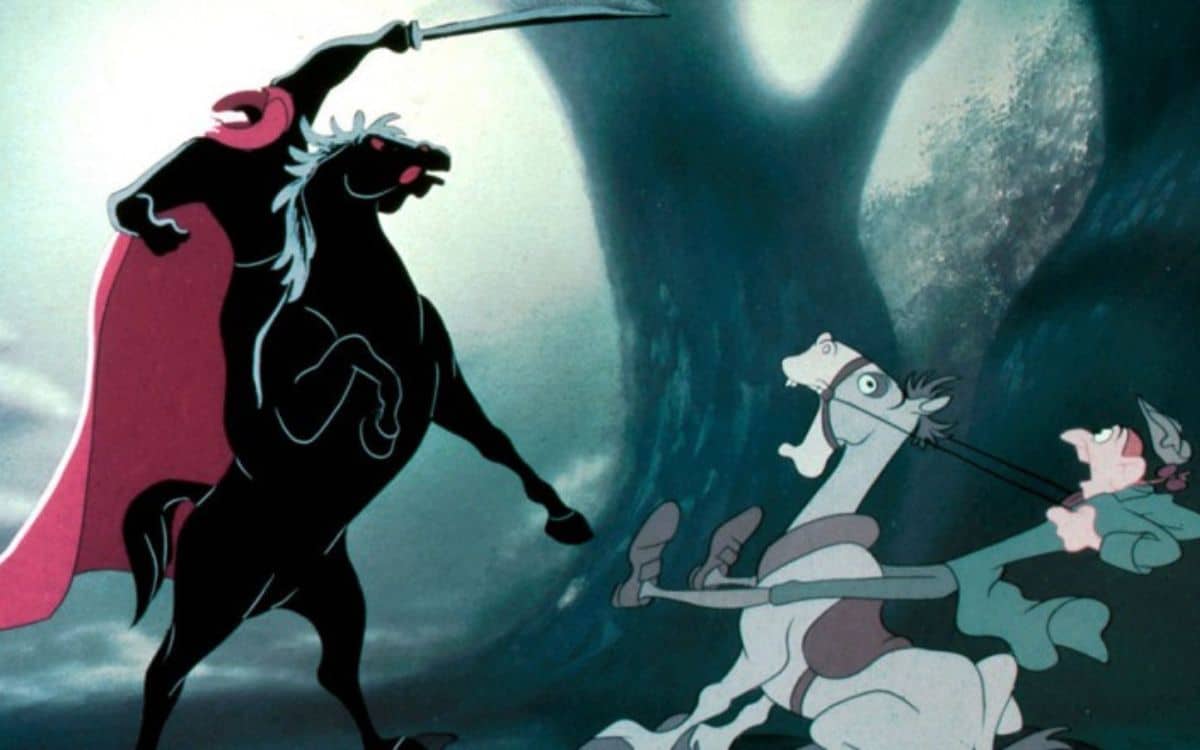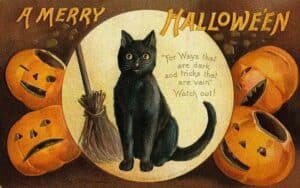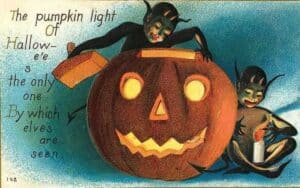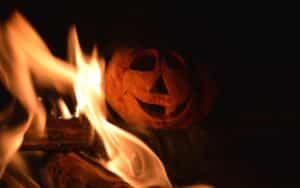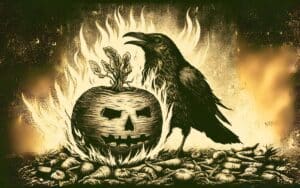Spooky Isles founder and editor DAVID SAUNDERSON was a guest speaker at Seriously Strange 40th Anniversary conference on 3 September. This is the speech he gave about the enduring legacy of Washington Irving’s The Legend of Sleepy Hollow, which many do not know was written in Birmingham, England.
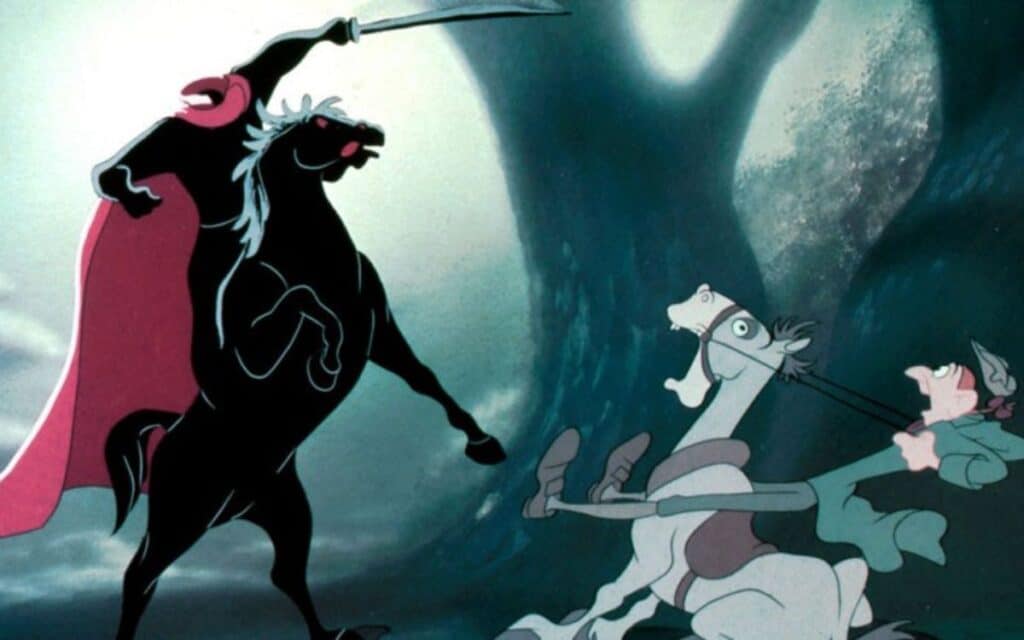
Anyone who has read or seen The Legend of Sleepy Hollow in its various forms is unlikely to forget the creepy tale of nerdy school teacher Ichabod Crane and his scary run-in with the terrifying Headless Horseman in New York State during the late 1700s.
I’m going to discuss some of the British and Irish folklore that influenced this Yankee tale and how in turn, the story itself has influenced us in celebrating Halloween and many other ghostly things in general.
Before I begin, I’d like to start by saying this is the second time I have attended ASSAP’s conference here at Bath University and I know it’s going to be a great time for everyone involved. It’s actually the first time speaking, so that’s exciting for me.
I’m sure, like we all do, I feel like a little bit of a fraud being here today.
There are so many great expert speakers – ones who have done so much research in books and in haunted houses – that when I was asked to speak, I thought to myself – what original thoughts do I have on the world of the paranormal?
For those who don’t know me, I am the founder and editor of Spooky Isles www.spookyisles.com, which focuses on ghosts, horror and dark history in the UK and Ireland.
I’ve been running Spooky Isles since 2011 and during that time, we’ve published more than 2,5000 articles by hundreds of writers on all sorts of spooky things – including some of the experts and speakers here today.
We’ve had over a million people visit our website since 2011 – and we’re currently getting about 1500 people visiting each day. We’re a volunteer-run non-profit site – indeed I’ve edited all those articles hence the odd typos at times – so I’m very pleased with what we’ve achieved in 11 years.
I’ve interviewed hundreds of paranormal investigators – from local ghost hunting teams to television big shots and others interested in the field.
And I’d like to think that Spooky Isles has been a pretty good chronicler of spookiness in England, Ireland, Northern Ireland, Scotland and Wales in the first decades of the 21st Century.
So it was with that thought – I may not have investigated as many haunted houses or done the groundwork as our beloved experts on this stage this weekend – but I have read and edited a lot of articles about UK and Irish hauntings and dark history across Britain and Ireland over the years, so some of that knowledge might have seeped into my noggin.
The Legend of Sleepy Hollow
It’s with that I come to my subject – an American ghost story.
Now, you may say – you’ve just said your website only deals with UK and Irish ghosts and horror – what’s with the American ghost story?
Well, it is a good point – The Legend of Sleepy Hollow is the quintessential American ghost tale – probably the most famous.
But it was written when Washington Irving lived in Birmingham, England – so I can always find a get-out clause when I want to.
So why am I talking about The Legend of Sleepy Hollow today?
The Legend of Sleepy Hollow has the enduring horror/ghostly legacy only rivalled by the likes of Mary Shelley, Bram Stoker and Edgar Allan Poe.
We probably don’t see Washington Irving in the same way as we do those great writers. But if we look deep into Sleepy Hollow, we will see how it mixes all we love about gothic horror and ghosts.
And for the ghost hunters and paranormal investigators here today, you can all appreciate the many levels of superstition and scepticism shown by the visitors and inhabitants of Sleepy Hollow.
Before going into the story, it’s important we understand about Washington Irving’s background.
Who was Washington Irving?
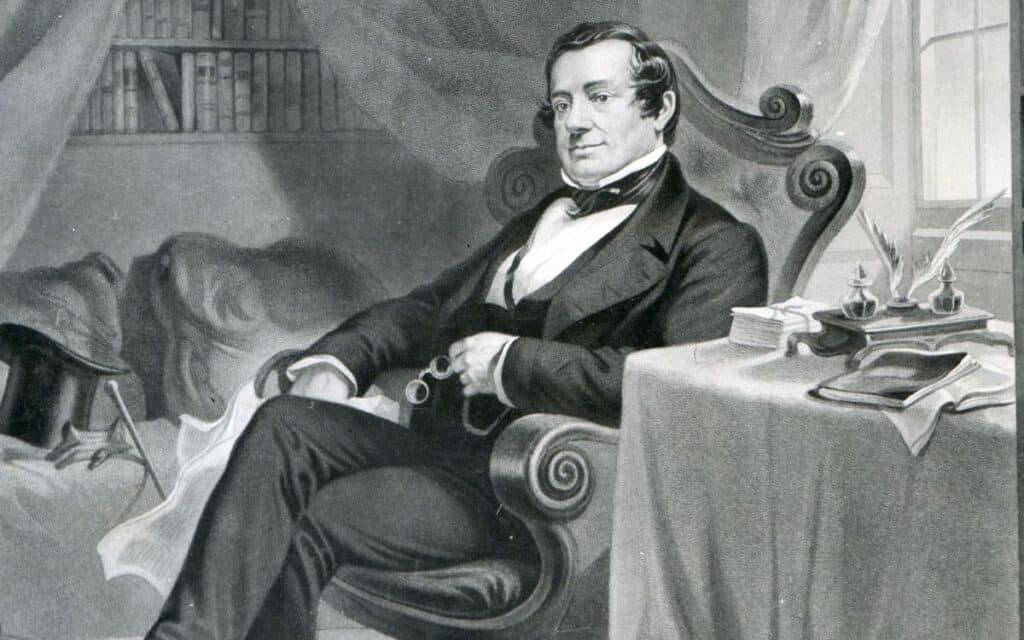
We all know him as the author of The Legend of Sleepy Hollow. But Washington Irving is much more influential on American literature than that. He’s been called The Father of American Literature.
He was named after the first American president, no doubt because was born in New York in 1773 – literally weeks after the American Revolution ended.
Despite not being particularly interested in schooling, Irving became America’s first celebrity writer. And like all great writers, he was a bit of everything and worked as a short-story writer, essayist, biographer, historian and diplomat.
Irving came from a merchant class family, but like most in their class in the newly-formed United States, his family’s fortunes dwindled following the War of 1812. (When America went back to War with Britain.)
Iriving actually moved to England about 1815, where he lived for about 17 years.
It was here that he wrote The Legend of Sleepy Hollow and his other famous tale, Rip Van Winkle, among many, many others. You can see a Blue Plaque for Washington near Oxford Circus in London citing his diplomatic work and his writings.
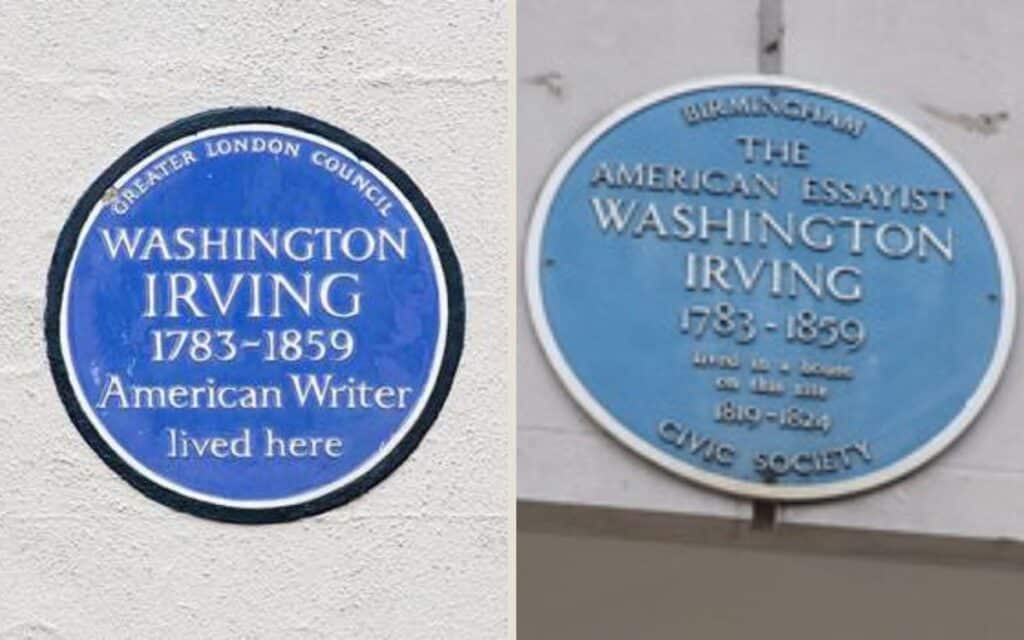
There’s also a blue plaque in Birmingham where he lived from 1819 to 1824. As I said before, Washington Irving wrote The Legend of Sleepy Hollow in Birmingham.
In the early 1800s, American writers were considered poor, illiterate substitutes to European authors, until Washington Irving came on the scene. He explored subjects with an American flair for the first time and he became an instant hit at home and abroad.
At this time, the United States was establishing itself as a young country. You can see this in Washington Irving’s writing – especially its lack of history and continuity.
American writers were trying to set themselves apart from Europe.
But Sleepy Hollow has an overabundance of ghost stories for such a young place.
Even though it is an American village, it is presented more like a European Village, which allowed it to have legends.
Sleepy Hollow’s fictional narrator Diedrich Knickerbocker – who heard the story “lost-footage style” in a business meeting – tells the reader the story he is going to relay happened during a very “remote period of American history, that is to say, some 30 years since”.
We have road potholes in England older than 30 years.
30 years isn’t very long to us, but that young nation, it was history. So there’s a certain irony to his statement here. Irving is in on the joke – he lived in England for a long time. He knows about old places, so he created his own one – in Sleepy Hollow.
The story of The Legend of Sleepy Hollow is set in 1790 in the countryside around the Dutch settlement of Tarry Town (based on the historical Tarrytown, New York), in a quiet glen known as Sleepy Hollow.
Sleepy Hollow is renowned for its ghosts and the haunting atmosphere that pervades the imaginations of its residents and visitors.
The story itself involves a skinny, lanky newcomer and schoolmaster – and very superstitious – Ichabod Crane who is trying to court Katrina van Tassel, a young heiress who is also being pursued by the Dutchman Brom Bones.
After being knocked back by Katrina at a party at her father’s farm where ghost stories were shared, Ichabod is chased by a headless horseman (who may or may not be his rival Brom Bones) who hurls a pumpkin at the man, throwing Ichabod from his horse. The schoolmaster vanishes and no one sees him again.
For years I had considered The Legend of Sleepy Hollow a rip-off of Robbie Burns’ Tam O’Shanter, which had been written in 1790. The story shares the same spookiness and daring ride at the end of each story.
Both protagonists – Tam O’Shanter and Ichabod Crane – ride their poor horses in a frenzy to escape the monsters of the night.
But given The Legend of Sleepy Hollow is set in 1790 – the same year Tam o’Shanter was written – it’s fair to say that the Scottish bard had some influence on Washington Irving’s Tale.
But there is so much more to the influences of Europe to The Legend of Sleepy Hollow than just one tale.
The headless ghost rider isn’t an invention of Washington Irving. I think we all know that.
We can find tales of headless horsemen all the way back to the Middle Ages, including stories from Germany, the Netherlands, and especially Ireland with its horrific legend of the “Dullahan”, a Grim Reaper-like rider who carries his own head!
I will speak about Dullahan a little bit later because it is so cool.
But just focusing on how Washington Irving came up with the story, we can probably thank Sir Walter Scott for his 1796 translation of the German poem The Wild Huntsman by Gottfried Bürger which was probably based on Norse mythology, about a evil hunter who is doomed to hunt forever by the devil and the dogs of hell as punishment for his crimes.
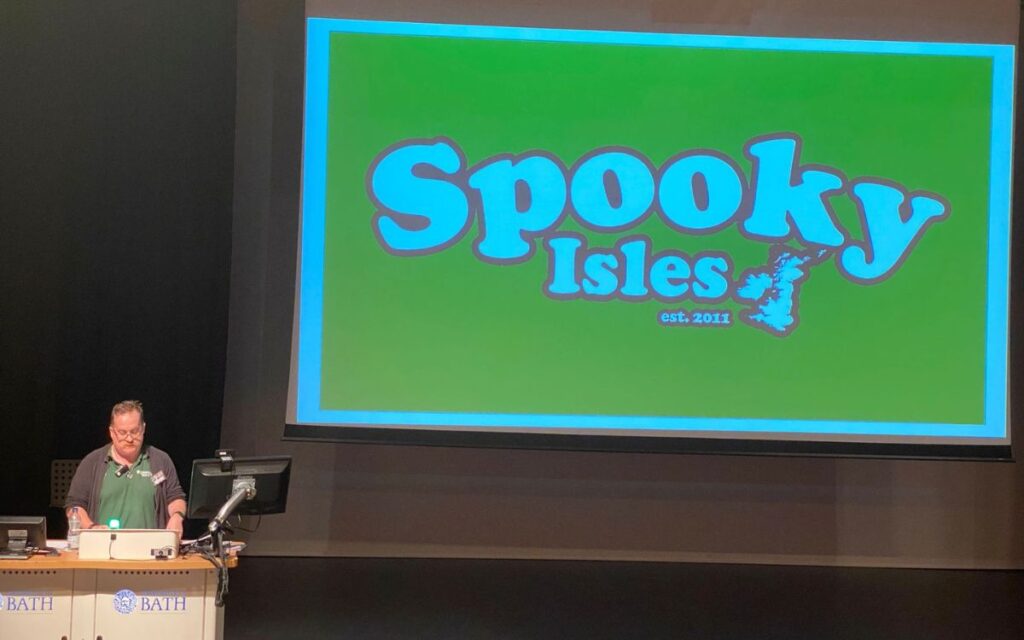
Irving had met and become friends with Sir Walter Scott in 1817 just before he wrote Sleepy Hollow, so it’s very not inconceivable that he was influenced by that Scottish writer too.
Others believe, including The New York Historical Society, that Irving was inspired by an actual Hessian soldier who was decapitated by a cannonball during the Battle of White Plains, around Halloween 1776.
I love ghost stories with a specific ‘thing’ – like a Hessisan soldiers – as opposed to a grey lady with no back story.
Apparently there was a real Ichabod Crane at the time too. But I’m sure you can find any name you want in registers if you look hard enough though.
Whether this is true or not doesn’t matter really because there are lots of things we know about Irving and they all point to a writer who took things from around him to create his fabulous tales.
Irving moved to Tarrytown – the setting of Sleepy Hollow – in 1798 when he was just a teenager. He fled there to escape a yellow fever outbreak in New York City, so it was probably a time of great death – something we all know too well about now with COVID.
Experts believe Washington Irving would have been introduced to local ghost stories and lore at this age, and he weaves lots of local places into the story of Sleepy Hollow.
It’s a bit of a melting pot type story – I’ve read lots of academic articles about The Legend of Sleepy Hollow which go on about the fact that it was written just after the American Revolution where the new country was trying to create its own history.
I spoke to my friend Dr Kaja Franck about this, who many of you may know as someone who got her doctorate studying vampires and werewolves, and she pointed out how Washington Irving was quick to create an atmosphere of European ghosts. He speaks about the history in the village, but neglects to talk about native American heritage, no Indian burial grounds here unfortunately.
Kaja used a great word – fauxlore – creating history and spookiness from somewhere it didn’t exist before. I’m sure you have your own examples that you’ve found over the years.
But that is what they wanted to do back in the late 18th and early 19th centuries – create something that was American and not European, but at the end of the day, that’s the opposite of what they did.
Now I would like to mention the Irish legend of the Dullahan which hunts the souls of the dying in the night.
Also known as Gan Ceann, meaning without a head, The Dullahan hunts the souls of the dying in the night. He is believed to be an incarnation of the sacrificial god Crom Dubh.
This description is from an article by our Ireland editor Ann Massey on Spooky Isles:
“For centuries the Celts have believed the head to be incredibly powerful, both the sacred and physical resting place of the soul. Warriors would take the heads of their enemies and keep them to ward off evil and gain more power, so it is little wonder then, that one of Ireland’s most terrifying unearthly beings encompasses all the fears and beliefs pertaining to the head.
“Head carried in the crook of his arm, The Dullahan has black eyes that continually dart from side to side, in search of his next victim. His mouth is contorted into a hideous, rictus grin and his mottled, decaying flesh clings menacingly to his skull.
“He rides through the darkness on the blackest steed with glowing red eyes, breathing flame and sparks from its nostrils. The Dullahan carries a whip made from the spine of a human corpse as he stands on his wagon, with wheel spokes of thigh bone and covered with dried human skin.
“The headless horseman lights his way with candles embedded into skulls, his own incandescent head a beacon in the dead of night. He has supernatural vision and when he senses a soul for the taking he holds his head aloft, seeing for miles across fields and forests, through windows and into the darkest and dingiest of rooms.
“The creature does not stop for anyone but his prey and all locks and gates fly open at his insistence, no one is safe. If you get in his way, at best your eyes will be whipped out or most likely, The Dullahan will throw a bowl of human blood upon you. The stain will not be washed away and you are marked as his next target.
“Unlike the Banshee, The Dullahan does not bring a warning of death and does not haunt specific families. He is death and he has no master other than Crom Dubh. He will not be stopped and his malevolent call to the dying is a summoning of their very soul.”
So basically at the end of the day, a headless horseman is pretty scary – it’s no wonder that Washington Irving wanted to use the Dullahan in a story.
We are all scared of the notion of any strange figure approaching us on a dark night, but imagine how much scarier if they didn’t have a head.
This idea of haunted horsemen permeates throughout British ghost culture.
Years ago, Spooky Isles had one young writer called Elliot Davies try his luck hunting down a ghostly horseman somewhere on an East Midlands crossroad that links Belper to Ashbourne.
You can read about it on the Spooky Isles if you’re interested, but in a nutshell:
In 2012, Elliot went out looking for a Horseman in Black which was reported to appear on a very old road that linked Belper to Ashbourne in the East Midlands.
The phantom was apparently dressed entirely in black wearing a three-cornered hat and cloak. The horseman had been last seen in 1992 and Elliot wanted to try his luck on whether he could catch a glimpse.
Elliot did his vigil and at the end of the day, it was a washout in his words. No sighting of the Horseman in Black.
I spoke to my friend Paul Lee, who has done much research on the subject, and he gave me a long list of haunted horsemen. I say haunted horsemen, because not all are minus their heads but most of them do.
Here’s a short list showing headless horsemen all over England.
- A headless horseman rides around the lands surrounding Stafford Castle in Staffordshire; though it is said by some that it is only the sound of hooves and not a visible apparition that is encountered.
- At Lumley Castle Hotel in Chester, a headless horseman is said to ride from the Castle to Finchale Priory, usually on stormy nights.
- At Audley End House in Essex, a coach and horses being driven by a headless coachman has been seen coming from The Lion Gate at the end of the drive, and then rides off through the countryside; also at the same gate a green hand has been seen floating.
- One newspaper report says the Fleece Inn, Elland, West Yorkshire, has “paranormal activity including tales of a headless horseman, re-appearing bloodstains and a dancing chair.”
- Miller & Carter Rickmansworth, an eatery in Hertfordshire, has a headless horseman on its grounds.
- Oxney Grange in Peterborough, Cambridgeshire, has a range of interesting phantoms, including a headless horseman. Bournemouth Town Hall in Dorset has its own phantom coach and horses, as does Caister Castle in Great Yarmouth, Norfolk.
There’s so many more, it clearly is a much bigger ghost trope than I thought.
I always wonder how many of these phantoms were headless before The Legend of Sleepy Hollow?
We all know of places that have become haunted over the years and history of hauntings fall out of thin air.
One esteemed colleague who has spoken here today told me years ago about how a famously haunted village in Kent that only became haunted in the 1950s with the publication of a book about its ghosts. Before then, locals knew nothing about it!
I don’t know how you paranormally investigate a headless horseman.
It must be hard to record something outdoors, in the middle of the night.
I guess the only way is to see it. Visually. Look for it.
And that is what a lot of people try to do.
In the 200 years since its publication, the village of Sleepy Hollow – real name Tarry Town – is now a mecca at Halloween and other times of the year for folk hoping to see the Headless Horsemen.
Sleepy Hollow – Tarry Town – is now an example of Gothic Tourism or Dark Tourism – so in a way, Washington Irving turned his own Fauxlore into Folklore.
As Whitby in North Yorkshire has its Dracula fans visiting its locations, so does Tarry Town, all longing to experience some of the atmosphere they enjoyed in the original story.
I’d like to visit Tarry Town one day too. It’s in a beautiful part of the world – it looks spooky – but I am no illusion the events took place.
The real legacy of Washington Irving and The Legend of Sleepy Hollow is the feeling of Halloween.
The pumpkins, the candles, the ghosts, the creepy crawlies, the cobwebs, the spooky owls and other creatures of the night.
The Legend of Sleepy Hollow took autumn – or fall – of New England – and stuck it into the Halloween story.
So when you see Halloween decorations and see orange things you have Washington Irving in some way to thank for that.
I always find it amusing when you see Halloween parties with chainsaw murderers and blood and guts films.
There is a time and a place for chainsaw murderers and blood and guts films, but for me, it isn’t at Halloween.
And I think that is because I was introduced to The Legend of Sleepy Hollow so young.
My first introduction to Washington Irving’s tale was through Wonderful World of Disney’s The Adventures of Ichabod and Mr. Toad, which was released in 1949.
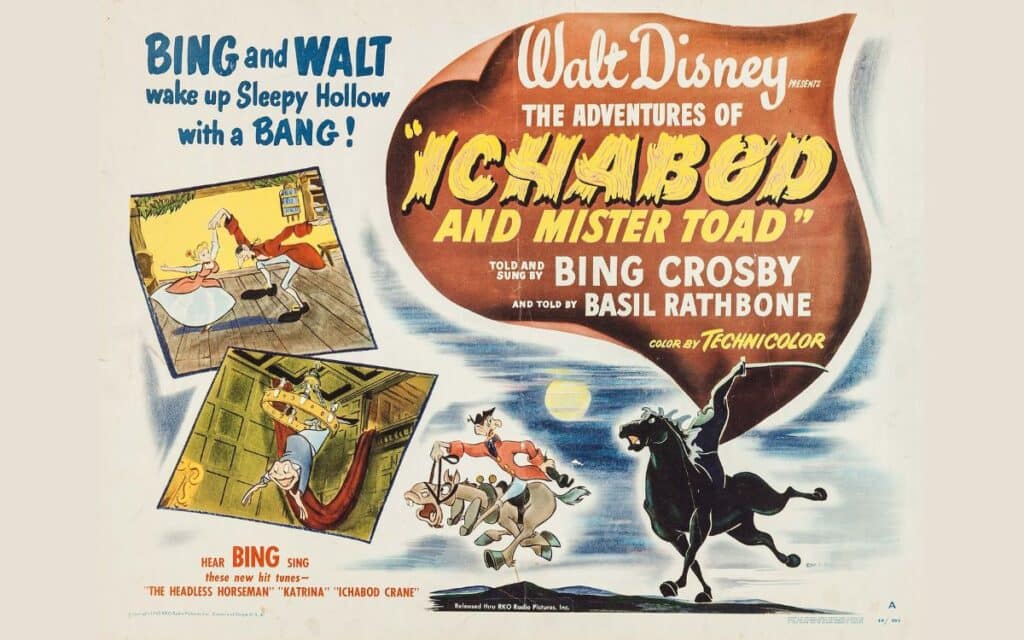
I saw it in the 1980s, I’m not that old.
That Disney film was an animated anthology. It included Bing Cosby singing and narrating his way through The Legend of Sleepy Hollow, and Basil Rathbone doing the honours of Wind in the Willows.
The ending of that film, with Ichabod Crane fleeing the Headless Horseman, is pants-wetting stuff.
I watched the film recently on Disney Plus and it is still pretty amazing.
After watching quite a few Sleepy Hollow films and TV shows in recent months, preparing for this, I reckon the Disney version is the most consistent, the most authentic and most like the book. (A bit like A Muppet Christmas Carol is surprising the most like the original Charles Dickens novella.)
Other versions of Sleepy Hollow are pretty much just detective shows that don’t really have anything to do with the original but the name Ichabod Crane and a Headless Horseman.
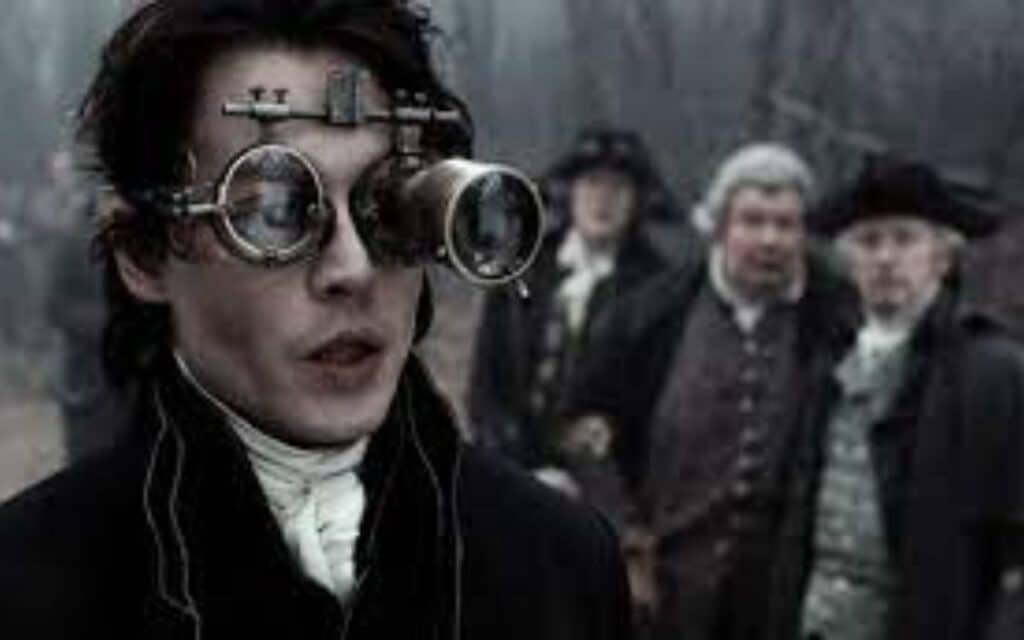
Funnily enough though – saying its so authentic, Disney turned the pumpkin that the Headless Horseman flings at Ichabod into a Jack o’Lantern – it has eyes and mouth cut into it and has fires burning from it.
In the original story, the pumpkin is just a pumpkin.
Still scary but nowhere near as scary as a Jack o’Lantern.
Washington Irving is the first American writer to turn pumpkins into something scary.
And it was Disney that added the Jack o’Lantern in The Legend of Sleepy Hollow.
Halloween was never mentioned in the original tale and the Dutch settlers very much at the centre of The Legend of Sleepy Hollow never celebrated Halloween.
Disney superimposed Halloween onto The Legend of Sleepy Hollow to make it spookier. And it works.
Everyone who has seen it remembers the Headless Horseman throwing a fire-eyed Jack o’Lantern pumpkin at Ichabod, don’t they?
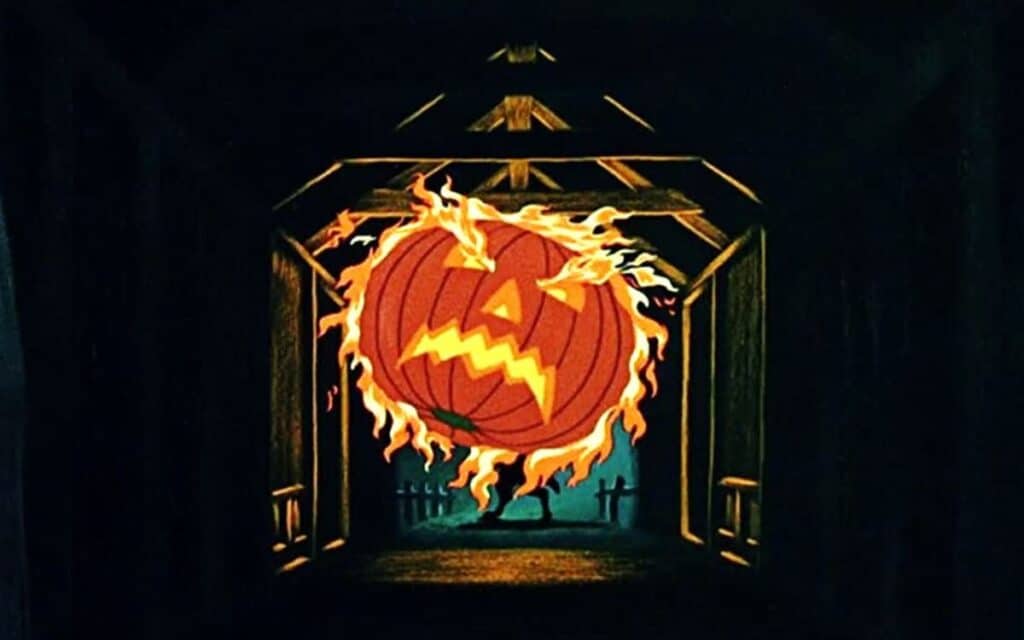
But, of course, we know that the original Jack o’Lantern in Ireland and other parts of these Spooky Isles were not pumpkins.
They were turnips.
Ann Massey, our Spooky Isles’ Ireland editor, has written lengthy articles on the history of Halloween in Ireland and the pagan feast of Samhain, which happens at the same time
She wrote: “During the pagan feast of Samhain, local communities would light a bonfire. To bring protection during the dark winter months, each family would take a burning coal from the fire and place it in a turnip which they would use to light the hearth upon returning home.
“The tradition of Jack O’Lanterns made its way to North America along with Irish immigrants of the 18th Century. With the humble turnip not as easy to come by, it was discovered that pumpkins were more plentiful and easier to carve.”
I tried having a go at making a turnip Jack o’Lantern this week and I think I did very well.
You can see my efforts here.

Maybe not as impressive as a previous effort from years ago which I did with a pumpkin, but it certainly took less time.
And I reckon it is slightly more spooky, if not, a little evil!
So in conclusion, The Legend of Sleepy Hollow – in whatever form you read or watch or listen to it – is cool.
This is not a talk about Washington Irving, but so you know, he lived a long and glorious life, including a posting as the American Ambassador to Spain, and died in 1859 and is now buried in Sleepy Hollow Cemetery in the town he made famous.
If you haven’t read The Legend of Sleepy Hollow, or want to re-read it, please do. It’s a fun ride!
Thank you for listening to me.
And if you ever want to write for Spooky Isles on ghosts, horror or dark history in the UK and Ireland, please come up and say hello!
Discover more about Associaton for the Scientific Study of Anomalous Phenomena (ASSAP) at its website: http://assap.ac.uk/

